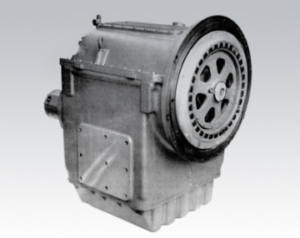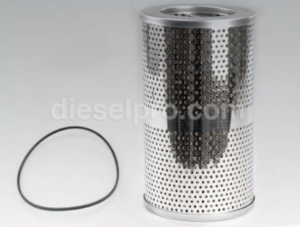
Introduction: Diagnose Early, Run Longer
The Twin Disc MG527 Marine Gear is renowned for its rugged performance, smooth engagement, and long service life. However, like any complex mechanical system, it can develop problems over time. From slipping clutches to overheating, from strange vibrations to delayed gear engagement, recognizing early signs of trouble is the key to avoiding expensive repairs and unscheduled downtime.
This comprehensive guide walks you through the most common issues that affect the MG527, along with clear step-by-step diagnostic checklists, inspection locations, and field-tested troubleshooting techniques. We’ll cover:
- Slipping or delayed engagement
- Unusual noises or vibrations
- Overheating
Understanding these issues—what causes them, how to detect them early, and how to fix them—is essential to keep your marine transmission running reliably for thousands of hours.
Parts Catalog for Twin Disc MG527 Marine Transmissions
Plate Kit For Twin Disc MG527 Marine Transmissions
Rebuilt Gears for Twin Disc MG527 Marine Transmissions
Gasket Kits For Twin Disc MG527 Marine Transmissions
Section 1: Slipping or Delayed Engagement In Twin Disc MG527 Marine Gears
Overview
When you shift into forward or reverse and your vessel hesitates, jerks, or doesn’t respond at all, it’s a red flag. These symptoms often mean that the hydraulic clutch pack inside the MG527 is not fully engaging or is slipping under load.
Symptoms of Slipping or Delayed Engagement
- Boat doesn’t move when shifted into gear
- RPM rises, but no propulsion occurs
- Noticeable delay (1.5 seconds or more) between gear selection and movement
- Chatter or vibration during engagement
- Gear engages but loses grip under throttle
- Visible oil foaming or milky residue in dipstick (indicates contamination or aeration)
Potential Causes
| Cause | Description |
| Low hydraulic pressure | Inadequate pressure can prevent clutch pistons from fully engaging the clutch pack. |
| Worn friction plates | Over time, clutch discs wear down, reducing friction and slipping under load. |
| Contaminated oil | Debris, water, or degraded fluid reduces clutch performance. |
| Air in the hydraulic system | Entrained air can cause pressure fluctuations and delays. |
| Improper cable adjustment | Linkage may not be delivering full travel, resulting in partial engagement. |
| Valve body wear or blockage | Hydraulic valves may stick or fail to open completely. |
Quick Diagnostic Checklist
Before Diving In: Always secure the vessel and ensure the transmission is at operating temperature.
✅ Step 1: Check Oil Level and Condition

- Remove dipstick after warming up gear
- Look for:
- Low oil level
- Foamy or milky oil (water ingress or air bubbles)
- Dark or burnt-smelling fluid
- Top up with approved SAE 30 or 40 oil if low
- If oil is contaminated, drain and refill immediately
✅ Step 2: Inspect Linkage and Shift Travel
- Shift from helm and observe gearbox lever
- Confirm:
- Full travel in both directions
- Centered neutral position
- No slack or excessive play
- Adjust cable bracket or turnbuckle as needed
✅ Step 3: Conduct Hydraulic Pressure Test
- Attach pressure gauge to forward and reverse clutch ports
- At idle, expect 100–130 PSI
- At RPM (1800–2000), expect 160–220 PSI
- Low pressure indicates:
- Failing pump
- Dirty filters
- Internal clutch leakage
✅ Step 4: Perform Stall Test (Advanced)
Use caution: This test puts load on the gear. Only attempt under supervision or with factory guidance.
- Apply throttle in gear with propeller restrained
- Monitor RPM—if engine RPM rises past stall spec, the clutch is slipping
- Immediately return to neutral if slippage is detected
What to Do If Slipping Is Confirmed
- Drain oil and inspect filter for metal
- Open clutch housing and inspect friction plates
- Replace worn discs, seals, and springs
- Replace or clean clogged valve bodies
- Recheck shift cable alignment
- Reassemble and perform full hydraulic test
Section 2: Unusual Noises or Vibrations In Twin Disc MG527 Marine Gears
Overview
Your marine transmission shouldn’t be silent—but it shouldn’t sound like a bag of bolts either. New noises or unexplained vibrations are often early indicators of mechanical wear, misalignment, or damaged internal components.
Common Sounds and What They Mean
| Sound | Likely Cause |
| High-pitched whining | Bearing wear, gear mesh misalignment, or oil starvation |
| Clunking on shift | Loose coupling, worn output shaft splines, or harsh engagement |
| Grinding | Severely worn clutch plates or broken internal components |
| Buzzing or humming | Cavitation in oil system or air in lines |
| Rattling at idle | Backlash in gear train or misaligned mountings |
Common Vibration Sources
- Worn or unbalanced propeller
- Damaged coupling
- Misaligned shaft
- Failing output bearing
- Internal gear wear
- Loose mount bolts or hardware
Inspection Points to Focus On
✅ 1. Output Shaft and Coupling
- Check for visible wobble when rotating
- Use a dial indicator to measure radial play
- Inspect coupling bolts for torque and corrosion
- Examine keyway and spline condition
✅ 2. Mounting Bolts and Alignment
- Loose mounts can cause the entire gear to shift under load
- Check all bolts with a torque wrench
- Use straight edge or laser alignment tool to verify alignment with engine and shaft
✅ 3. Gear Teeth (If Opened)
- Look for:
- Chipped teeth
- Uneven wear patterns
- Signs of overheating or galling
✅ 4. Bearings
- Use stethoscope to isolate bearing hum
- Listen near output bearing housing
- Heat and noise = early failure sign
✅ 5. Oil Pump and Valve Body
- Noisy pump may cavitate from low oil
- Sticky valve causes engagement delays and inconsistent shifting
Diagnostic Test: The Listen-and-Feel Walkthrough
- Start engine at idle
- Shift into forward and hold
- Walk to the gear and listen with stethoscope or hose
- Feel the housing:
- Smooth = good
- Vibrating = check shaft or bearings
- Clicking = gear lash or broken component
- Repeat in reverse
- Return to neutral and idle up to 1000 RPM
- Monitor for changes in sound or frequency
What to Do When You Hear Trouble
- Isolate sound origin
- Conduct oil change and filter inspection
- Check and log shaft alignment
- Plan for disassembly if:
- Noise worsens under load
- Metal flakes appear in oil
- Vibration spreads to hull or deck
Section 3: Overheating In Twin Disc MG527 Marine Gears
Overview
A properly maintained MG527 runs at moderate oil temps—even under full load. Overheating, however, is one of the most dangerous conditions for marine gears. It causes:
- Oil breakdown
- Clutch glazing
- Seal damage
- Premature bearing failure
Symptoms of Overheating
- Burnt smell from oil
- Discolored or blackened oil
- External housing hot to the touch (over 200°F/93°C)
- Oil temp alarms (if equipped)
- Gear slippage under throttle
- Loud operation or change in shift feel
What Causes Overheating
| Cause | Description |
| Low oil level | Not enough fluid to lubricate and cool internal parts |
| Dirty oil cooler | Restricted flow leads to heat buildup |
| Blocked raw water line | Marine growth or debris reduces cooler efficiency |
| Incorrect oil | Non-approved oils can foam or break down under load |
| Air in hydraulic circuit | Traps heat and reduces flow |
| Slipping clutch | Generates excess friction and heat |
Step-by-Step Cooling System Inspection
✅ Step 1: Visual Inspection
- Locate the oil cooler (mounted inline or on transmission)
- Check for:
- Leaking hoses
- Collapsed lines
- Salt or corrosion at connections
- Rust buildup around fittings
✅ Step 2: Check Raw Water Flow
- Disconnect output hose
- Run engine at idle
- Observe flow rate—should be strong and steady
- Weak flow = blockage or impeller failure
✅ Step 3: Cooler Cleaning
- Shut down and cool engine
- Remove cooler
- Flush both water and oil sides
- Use marine descaler (Rydlyme, Barnacle Buster)
- Let soak and rinse thoroughly
- Inspect cooler tubes for debris or corrosion
✅ Step 4: Reconnect and Pressure Test
- Pressure test cooler before reinstalling
- Reattach with new seals or gaskets
- Refill oil and check for leaks
Other Checks
- Verify oil type and viscosity
- Use infrared thermometer to track housing temps during operation
- Monitor with oil temp sensor or aftermarket digital gauge
- Compare to factory spec—typically < 180°F (82°C)
Preventative Tips to Avoid Common Failures
| Task | Frequency |
| Oil change | Every 250 hours |
| Filter inspection | Every 250–500 hours |
| Cooler flush | Every 500 hours |
| Hydraulic pressure test | Every 500 hours |
| Shaft alignment check | Every 1000 hours |
| Clutch inspection | Every 1000 hours or signs of slippage |
Emergency Response If Failure Occurs at Sea
| Symptom | Immediate Action |
| Slipping | Reduce throttle, shift to neutral, restart engine |
| Overheating | Shift to neutral, shut engine, let cool |
| No response | Check oil level and linkage, manually shift at gear |
| Oil leak | Contain with pads, avoid high RPM |
Log the incident and schedule service as soon as possible. Never continue operating with slipping or overheated gear.
Conclusion: Troubleshoot Now, Underway Later
The Twin Disc MG527 is engineered to perform—but like any machine, it speaks in signs. Slipping, vibration, and overheating aren’t just annoyances—they’re warnings.
By following the step-by-step diagnostics in this guide, you’ll be able to:
- Detect early symptoms
- Prevent expensive failures
- Extend the life of your gear
- Improve vessel safety and responsiveness
Document what you observe, inspect regularly, and service proactively. With a trained ear and an informed mind, you can keep your MG527 running strong—voyage after voyage.

Plate Kit For Twin Disc MG527 Marine Transmissions
Rebuilt Gears for Twin Disc MG527 Marine Transmissions
Gasket Kits For Twin Disc MG527 Marine Transmissions
Videos About Twin Disc Transmissions
6 Reasons Your Twin Disc Transmission Has Low Oil Pressure
7 Reasons Your Twin Disc Transmission Is Overheating
3 Reasons Your Clutch Plates in Your Twin Disc Transmission Are Making Excessive Noise
Bull Gear On A Twin Disc Transmission
Rebuilt Twin Disc Transmissions



 Free US Calls: 1-888-433-4735
Free US Calls: 1-888-433-4735 International: 305-545-5588
International: 305-545-5588